Outside were the eucalyptus trees, like lace against the sky. If it were only possible to lie against them, light and bodiless, sink into their softness, deeper and deeper, lost in them, buried, never come back again....”
-Shirley Jackson, “The Road Through the Wall”
The humble eucalyptus may look like just another tree branch but the eucalyptus has long been used for its medical properties and is one of the most popular flower fillers used by florists. This fascinating plant has a rich history within its native country and is still a very important plant both locally and internationally.
Related: 10 Unique Flower Bouquet Fillers
Pronunciation
yoo·kuh·lip·tuhs
Scientific Information
The eucalyptus is a genus of over 700 different species of flowering trees, shrubs or mallees within the myrtle family. The eucalyptus tree is known as one of the tallest on the planet, depending on the species, the trees can reach 33 to 200 feet in height and can live around 250 years in the wild. Eucalyptus trees are also very fast growing with many reaching maturity within 10 years. Most species of eucalyptus have leaves that change throughout their life, with young plants having round leaves and mature plants having sickle-shaped leaves. The leaves of eucalyptus are very fibrous but low in nutrition and are generally toxic to most animals. Most species of eucalyptus also shed their bark at least once a year as well.
Eucalyptus trees have flowers that can bloom in white, yellow, pink or red colours. However, they don’t technically have petals as the colours that are seen as a result of a large number of stamens.
Origins and Naming
Eucalyptus trees are native to Australia, Tasmania, and surrounding islands. They are most commonly known as a gum tree due to the sticky and rubbery substance it exudes when damaged.
The name eucalyptus derives from the Greek words eu- (well) and kaluptos (cover) meaning well-covered. The name refers to how the flowers of the tree are generally covered and concealed with most eucalyptus species.
History
The eucalyptus tree was long used and highly valued by the Aboriginals in Australia, in which they would chew the leaves due to their high water content to stay hydrated. They also used it to treat fungal conditions and heal wounds, as well as brewing the leaves for tea as a remedy for fevers.
Europeans didn’t start making collections of eucalyptus trees until the late 1700s. In 1850 the eucalyptus plant was introduced to California in hopes of creating a sustainable and renewable source of timber. Unfortunately, the plant did not grow to the same quality as it did in Australia and was eventually considered unusable for the state but the species is still found there today.
Eucalyptus has since become an important economical plant for many countries as it is used for pulpwood, firewood, and timber and more. All of the parts of the eucalyptus can also be used to make a variety of colours of dye. Eucalyptus trees are used in creating the traditional Australian instrument, the didgeridoo.
Eucalyptus oil was made in the late 1700s by distilling the oil from the leaves of the plant for a variety of antiseptic and medical uses. During the end of the 19th century, eucalyptus oil was used in England in hospitals to clean urinary catheters. Surprisingly, modern research is beginning to back up this dated practice.
Photo by Daniel Squibb on Unsplash
Health Benefits
Eucalyptus oil has a wide range of proven medical uses and is still used today. The two main components that are responsible for its sharp smell and medicinal uses are the cineole and eucalyptol contained within the leaves.
Antimicrobial/antibacterial/antifungal/antiviral properties
Many studies have shown that eucalyptus oil appears to have antimicrobial properties with others finding that it has a positive interaction with antibiotics in making them more effective. Other studies have noted that it may also enhance immune responses while others have looked at its effectiveness in treating malaria. It’s even been found to be effective in fighting the bacteria that causes tooth decay and periodontitis.
Colds and respiratory problems
Eucalyptus oil has long been used to help treat respiratory problems such as asthma, bronchitis, coughs, colds and congestion, while there is contradicting evidence on its efficacy.
Insect repellent
Eucalyptus oil is an effective insect repellent against most troublesome insects. The US officially registered the oil as an effective insecticide and miticide for mites and ticks in 1945.
Pain reliever
Eucalyptus oil can also be used as a mild pain reliever and is often found in ointments for muscle and joint pain.
Eucalyptus in Flower Arrangements
Eucalyptus are a stunning green to add to any flower bouquet or arrangement. They’re sleek modern, have a fragrance that is suitable for those with allergies, and naturally deter insects. Eucalyptus goes well with any style of flower bouquet in an arrangement, from bridal bouquets to birthdays, congratulatory as well as romantic arrangements.
*Roses, wax flowers, and orchids look gorgeous with eucalyptus and are friendly to allergy sufferers.
*Eucalyptus is often paired with red roses as its simplicity and deep shades of green help the colour of the roses pop.
*Hydrangeas pair with eucalyptus as it showcases the hydrangea without stealing the show.
*Eucalyptus compliment the frilled petals and textures of the peony, pom pom, and carnation.
*Eucalyptus also pairs well with other types of flower filler greenery such as the dusty miller and grey brunia. The combination adds texture and colour to a flower arrangement.
Symbolism and Meaning
The eucalyptus tree has a special meaning for the Aboriginals of Australia. It represents the division of Earth, heaven, and the underworld. It also symbolises purification and the dissipation of negative energy.
Eucalyptus Types
There are many different types of eucalyptus but here are some of the most popular varieties.
Baby Blue Silver Leaved Mountain Gum
The Eucalyptus pulverulenta or the Baby Blue Silver Leaved Mountain gum is the most common type of eucalyptus used by florists and in floristry. It has small blue-green rounded leaves that are fragrant. The plant is rather small and multi-stemmed.
Rainbow Eucalyptus
Rainbow eucalyptus can grow up to 80 meters in height. What makes this tree special is that it sheds its bark several times a year and as it darkens and matures it gives off multi-coloured tones.
Cider Gum
Eucalyptus gunnii is one of the more common types of eucalyptus that is used both ornamentally and within floristry. The juvenile leaves are commonly used in floristry and have a glaucous colour but the adult leaves are elongated with a non-glossy grey/blue-green colour.
Silver Dollar Gum
Eucalyptus cinerea is another very popular eucalyptus in floristry as its juvenile leaves rarely mature and are very fragrant. Its juvenile leaves are egg-shaped and glaucous in colour with a white wax covering.
Eucalyptus Care
Eucalyptus plants are generally hardy plants that tolerate drought, however, they don’t tolerate the cold very well. Many of the species can grow in a garden or indoors too.
Eucalyptus Garden Care
Eucalyptus should be planted in the spring and summer with access to full sun. Plant in well-drained soil and avoid planting species that are too large as they can grow very fast and become top-heavy before their roots are well-established. Newly planted eucalyptus should be watered through dry spells but after a few years, it won’t be necessary. The same goes with pruning, once the plant is mature it requires very little pruning.
Eucalyptus Cut Flower Care
The fresher the stems the longer they will last. Eucalyptus stems are generally longer lasting than flower and can last around 3 weeks to up to a year in a vase with proper care. Trimming their stems regularly can also extend their life. Avoid putting eucalyptus stems in the fridge as the humidity level and the ethylene gas that comes from fruits and vegetables can inhibit the stems flower growth. Eucalyptus also dries and preserves very well.
General Flower Care:
*Cut the stems at a 45-degree angle.
*Use flower food.
*Prune and remove any dead or dying leaves or petals, especially if they’ve fallen in the water.
*Change the water daily.
*Keep flowers away the appliances that give off heat.
Interesting Eucalyptus Facts
*A koala's diet is completely made up of certain species of eucalyptus and they are one of the few animals immune to its toxin.
*The Eucalyptus regnans, the Australian Mountain Ash, is the tallest of all flowering plants. The record is currently 99.6 meters (327 feet) tall.
*Eucalyptus trees have been used in looking for gold as the roots extract the metal from the soil, as it is toxic to the tree, it gets rid of the metal through its leaves. While only trace amounts cant be found on the trees it is a great indication of where gold can be found underground.
*The nectar of some eucalyptus species produces high-quality monofloral honey.
*Eucalyptus trees are considering to be very flammable and if they catch on fire they can explode causing firestorms.
*Eucalyptus trees have strategies to survive fires. Inside the tree and its roots, there are dormant eucalyptus shoots that only germinate under the influence of hormones that are triggered by heat.
This is a Hong Kong GGB original 'Flower Facts: All About Eucalyptus ' blogpost.






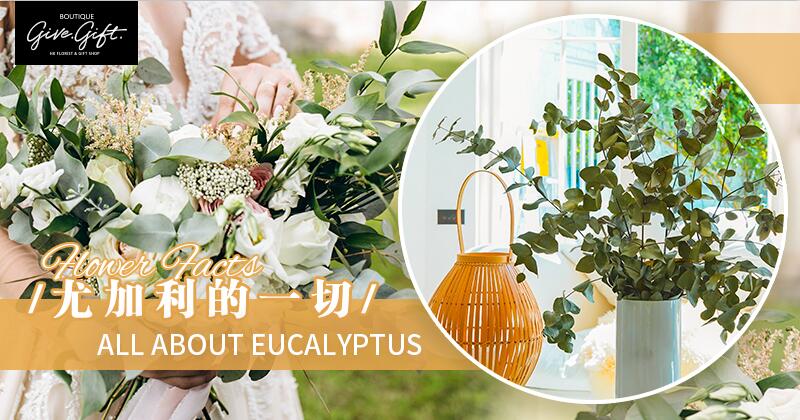



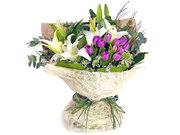



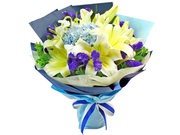



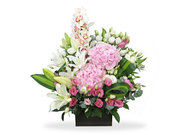
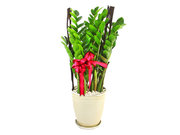









 Share
Share Tweet
Tweet +1
+1  Pin it
Pin it Post
Post  Weibo
Weibo Review
Review



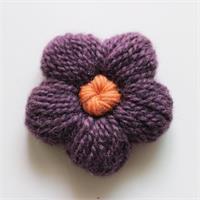


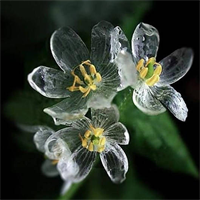
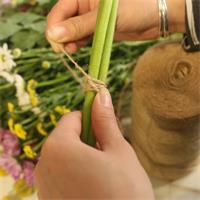
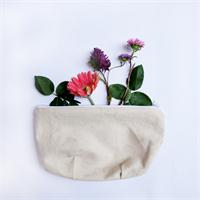





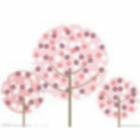
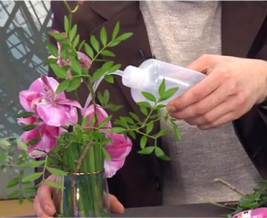



 Diwali Gifts
Diwali Gifts 
 ▶
▶